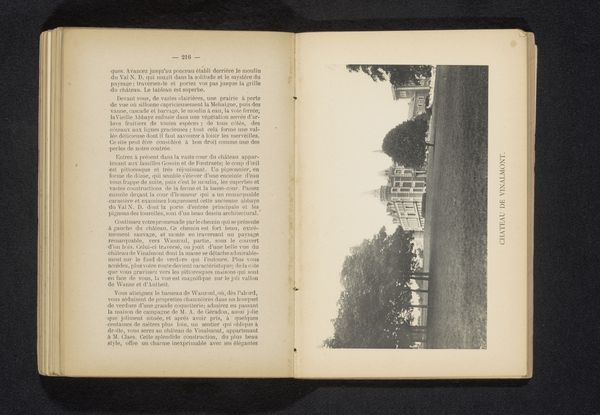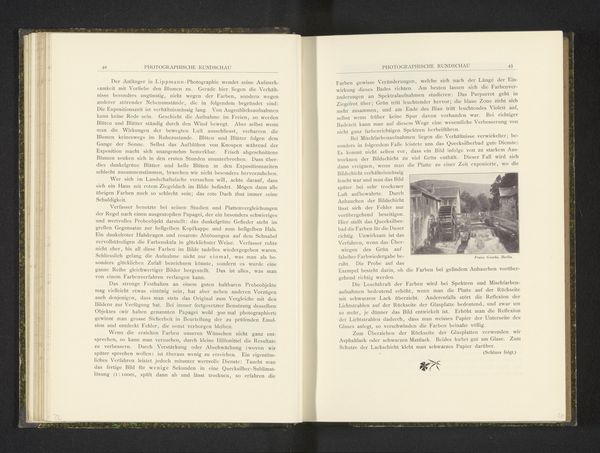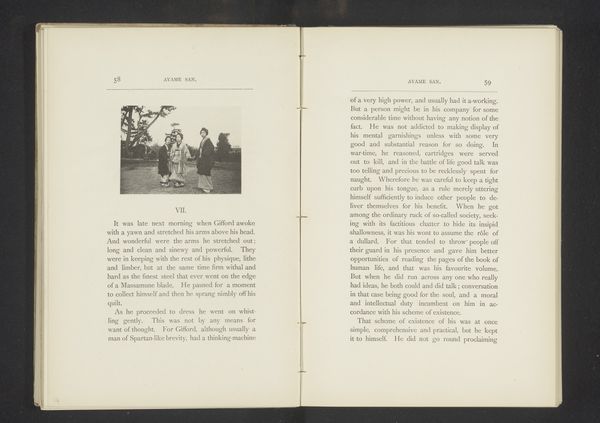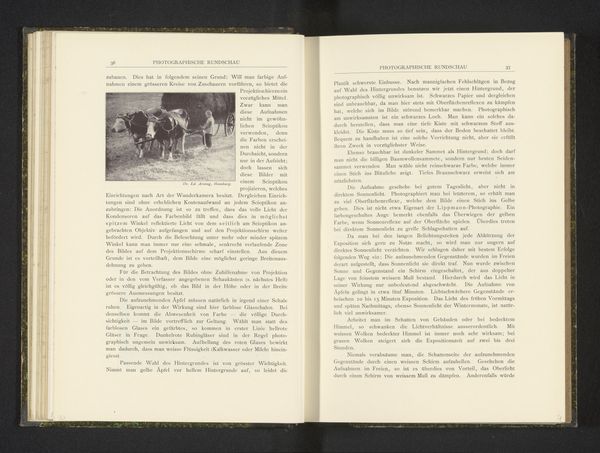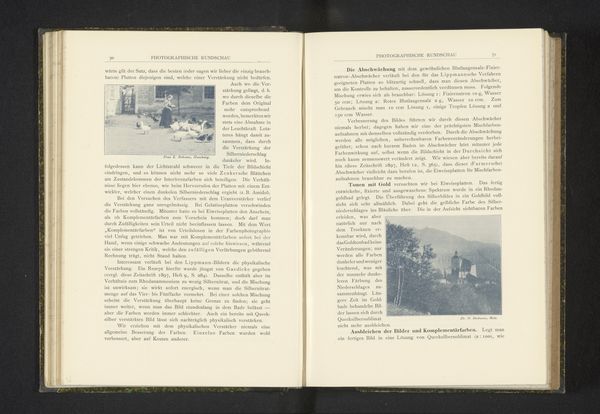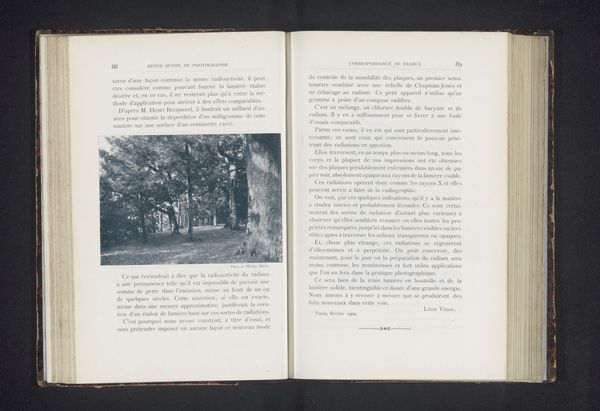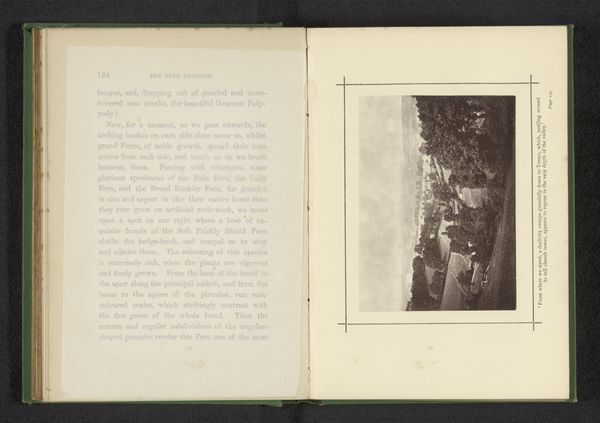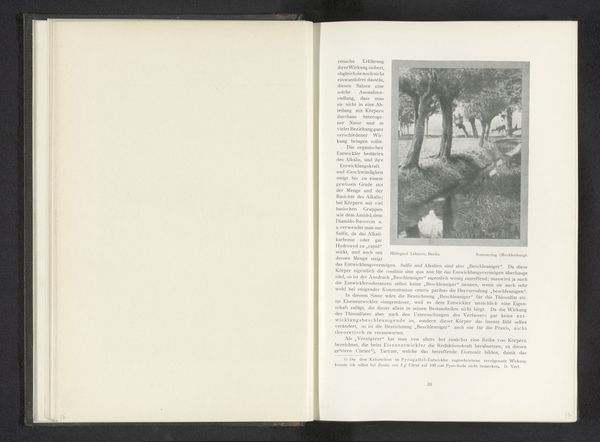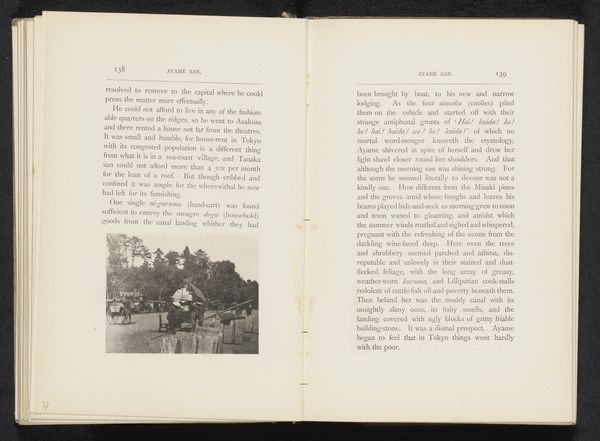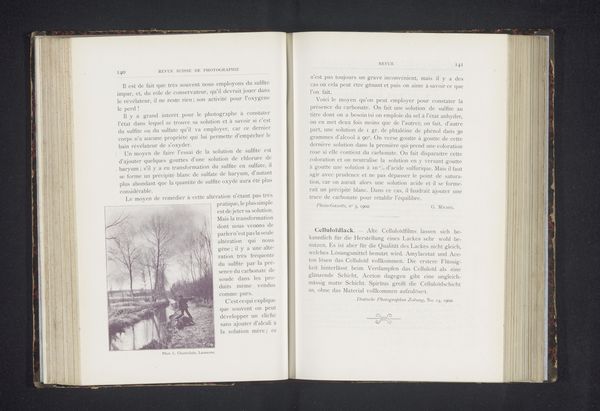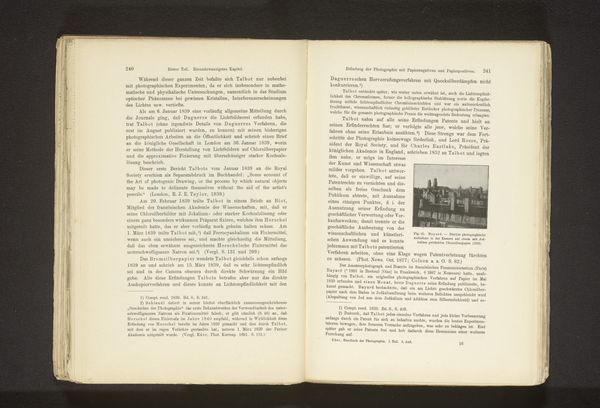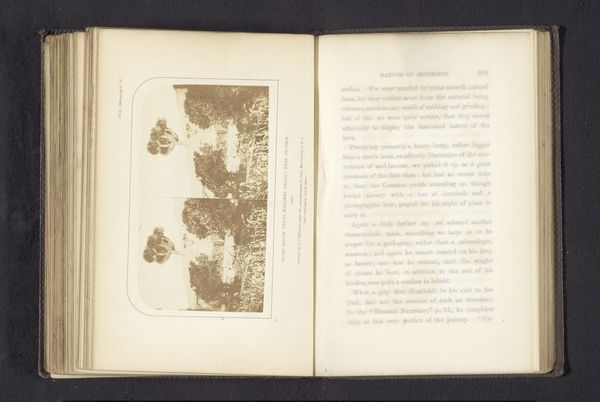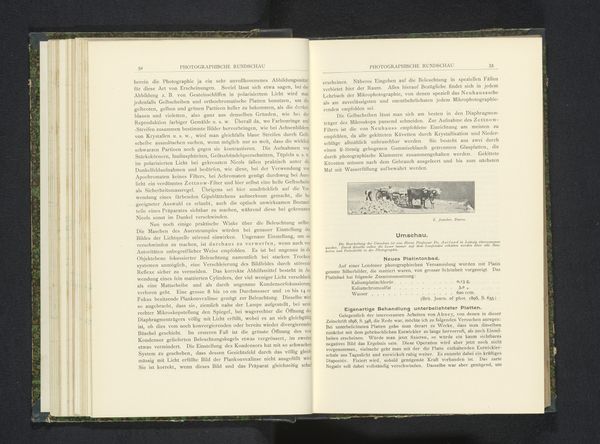
Dimensions: height 83 mm, width 120 mm
Copyright: Rijks Museum: Open Domain
Editor: Here we have "Landschap met boer en vee op het pad", or "Landscape with Farmer and Cattle on the Path," which we believe dates from before 1902, by A. Wicky. It’s a print of a photograph, and to me, it evokes a sense of nostalgia and the slower pace of rural life. What do you see in this piece? Curator: For me, it is an articulation of photographic practice as labor. The image's origin as a photographic print positions it within a specific material culture, a moment where photography strove for artistic legitimacy. Think of the chemical processes involved, the darkroom labor, and the materiality of the paper itself. It all speaks to a form of skilled production, blurring lines between art and craft. Editor: So, it’s less about the picturesque scene itself, and more about how it was made and the journey the materials took? Curator: Precisely! We must consider the socio-economic implications of photography’s rise. Who had access to these techniques? Who consumed these images? This print, likely mass-produced, would have been available to a broader public than, say, an oil painting. Consider also the shift in artistic labor – photography, though artistic, relied on reproducibility and standardization, challenging traditional notions of the artist’s unique hand. How does this mass production affect value and artistic appreciation? Editor: I never thought about photography in terms of labor and mass production. It’s usually presented as art, or maybe documentation, but not really considered as work. Curator: Absolutely! Recognizing art as work decenters the artist and instead acknowledges production. The medium, then, takes center stage to become more of the message. Editor: That is definitely a refreshing and alternative way to think about this image. Curator: And, hopefully, it sparks a fresh perspective on art itself.
Comments
No comments
Be the first to comment and join the conversation on the ultimate creative platform.
